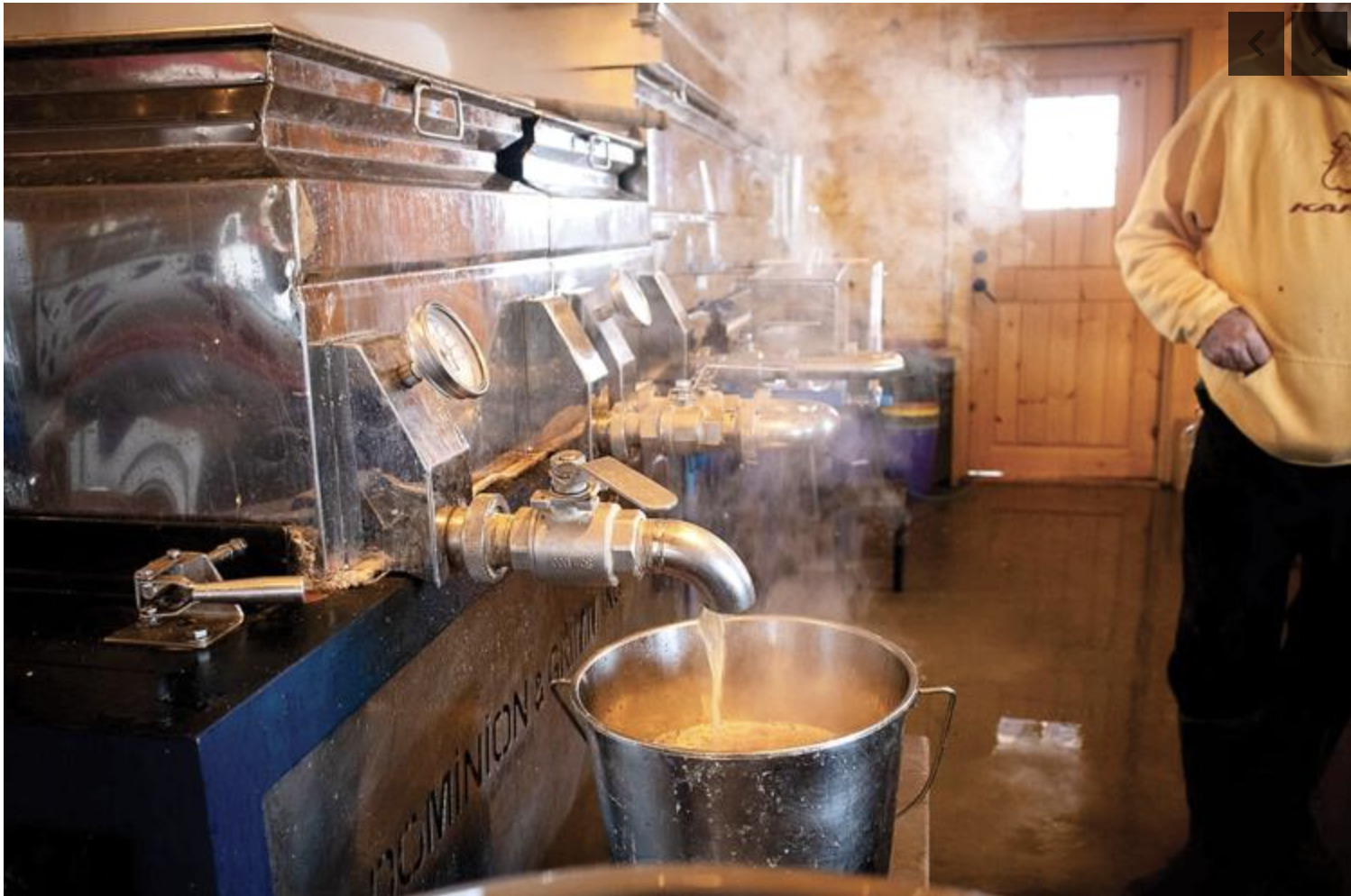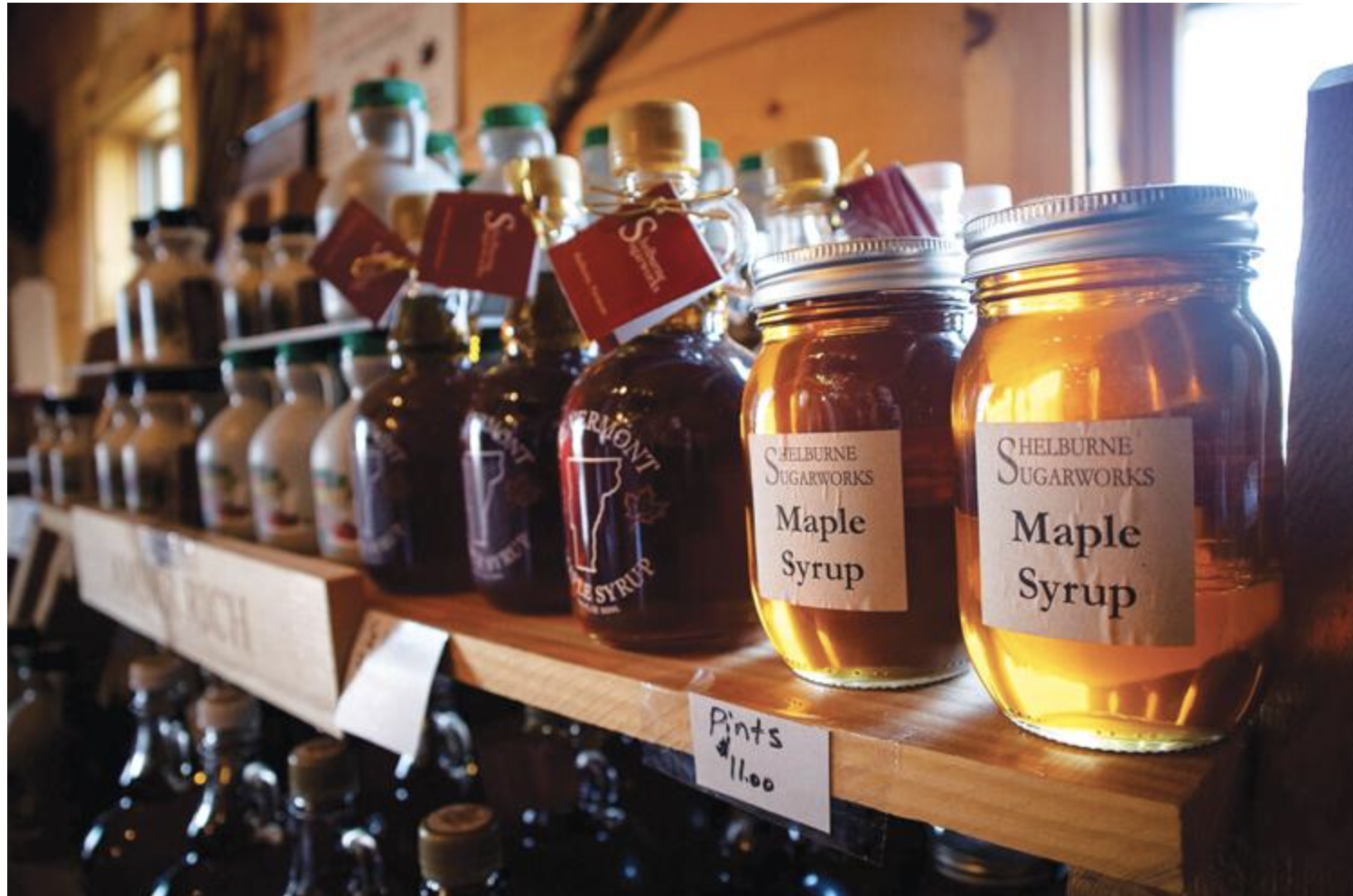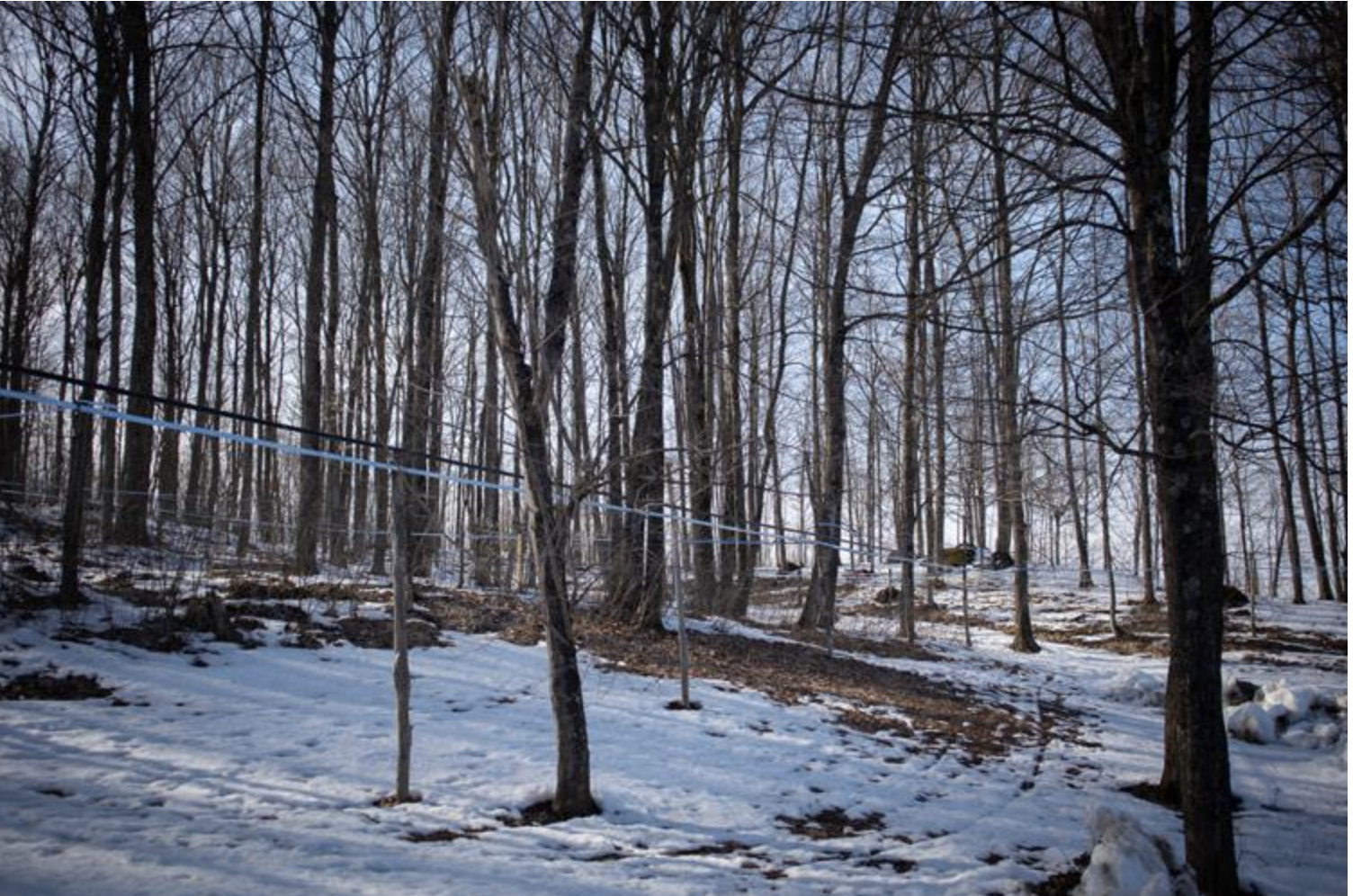Shelburne sugarmaker undaunted by warm winter
The sweet scent of maple rose with the steam from the Shelburne Sugarworks evaporator on a recent afternoon as Steven Palmer dipped a hydrometer into a metal cylinder holding newly boiled sap to measure the sugar content.
The instrument read 66 percent sugar — the correct content for maple syrup.
Palmer and two assistants released the syrup from the evaporator into a large metal bucket and then a vat to keep it warm before it would flow through a filter to clear it of sediment. They would later transfer the syrup into containers to sell to customers, including those who would visit Shelburne Sugarworks during the Vermont Maple Sugar Makers Association’s open house events, taking place the last weekend of March and first weekend in April.
A warm winter in Chittenden County jumpstarted the season for Shelburne Sugarworks and other maple producers in Vermont. The abnormal weather, though, hasn’t put a damper on productivity, Palmer said. As of this week, he had produced about 1,000 gallons of syrup from the 3,000 or so trees he taps, a little bit ahead of previous years at his operation on Shelburne Hinesburg Road.
“It’s changed the window of time that the season really starts and ends,” Palmer said. “We never used to tap until Town Meeting Day. That has kind of changed over the years. This year we started tapping on Feb. 1. We have just had such a warm and crazy winter. We decided to tap early, and it’s really paid off.”
The average temperature this winter was 29 degrees — 5.4 degrees warmer than the normal average, according to Matthew Clay, a meteorologist for the National Weather Service, which records temperatures at Burlington International Airport. Between 1991 and 2020, temperatures from December to February averaged 23.6 degrees.
“I personally think, when I see temperatures for a month plus or minus 1 degree from normal, it’s pretty average,” Clay said. When average temperatures rise more than 3 degrees, and even climb more than 5 degrees above normal as they did this winter, “that is a pretty significant deviation,” he added.
An early start
Palmer started in the maple business when he was 6 years old. His grandmother Marjorie Palmer began tapping trees and boiling sap on her farm in 1942 during World War II, creating maple sugar in response to the U.S. rationing of cane sugar.
In 1972, Marjorie built a new sugarhouse a half mile down the hill on Shelburne Hinesburg Road, where Shelburne Sugarworks operates today. The matriarch, who died in 2001 at 92, is now buried at the site of the original sugarhouse. Steven Palmer opened his business in 2011, and his grandmother’s portrait hangs on the sugarhouse wall.
The unpredictability of the maple business isn’t only because of weather and temperature, explained Allison Hope, executive director of the Vermont Maple Sugar Makers Association, an industry organization that dates to 1893.
“For a lot of folks, this year is an earlier year than many for tapping and collecting sap, and yet it also goes on cycles,” Hope said. “We have earlier years sometimes, and it’s hard to know which of the variables are related to climate change and which are related to a confluence of other natural phenomenon that happen to be going on that year.”
Climate does affect the health of maple trees, Hope said, but even those conditions change based on the location of the sugarbush within the state.
“It depends on accumulation of weather over time,” she said. “What happens in the summer, like whether we get enough rain, for example, impacts the season.”
Maple trees have unique anatomy and physiology, said Abby van den Berg, a research associate professor at the University of Vermont and assistant director of the Proctor Maple Research Center, a field research station of the UVM plant biology department.
Maple sap production varies based on temperature and pressure, van den Berg said. “It relies on the freezing and thawing temperatures.”
When the thermostat dips below 32 degrees, maple trees take up water through their xylem tissue and carry it up to the fine branches, where that water is stored as ice crystals within the tree, she said. Once temperatures climb above freezing, the tree converts some of its stored starch into sucrose, or sugar and loads it into the xylem sap. This is the sugary sap that maple makers boil to create syrup.
Climate effects
Climate change has not influenced sap production in Vermont as much as it has altered the overall ecosystem. The weather has become more volatile, van den Berg said.
“Getting those more frequent storms, that can cause damage to the sugarbush in the fall or even the summer,” she said. “That’s something producers are experiencing, and so the experience and impact is on the whole forest and the sugarbush, more so than it is on exactly what’s coming out of the tree.”
Invasive species and the health of the surrounding ecosystem also have consequences for maple production, Hope and van den Berg said. Warmer temperatures have welcomed more damaging pests to the state’s trees, including the emerald ash borer, which “is basically going to take out all of the ash trees,” van den Berg said. “That is an enormous change to our forests and ecosystems, both the ones used in maple production and the ones not.”
Advancements in technology have helped combat these effects, van den Berg said.
“We have not so much seen any impact on yields, for the most part, because technology has been well beyond surpassing any kind of reduction.”
Many sugarmakers have deployed vacuums, pipeline taps and reverse osmosis technology, as well as using more renewable energy sources in production.
High-tech maple
Steven Palmer pulled out his phone and showed an app connected to sensors placed on multiple trees in his sugarbush. The sensors provide real-time readings of the temperature and vacuum pressure within the line that delivers sap to the outside of the boiling room. The app alerts Palmer about any problems, such as a leak in the pipeline system.
“We are about 95 percent more efficient than we were 30 years ago because of technology,” he said. “We produce four times as much syrup per tap than we did 30 years ago and before.”
Shelburne Sugarworks uses a pipeline system for its taps and a vacuum to pull the sap through the miles of tubing that carries it to their sugarhouses.
“When you use vacuum technology, you don’t have to fully rely on Mother Nature,” Palmer said. Each inch of vacuum pressure increases sap production by 5 to 7 percent, increasing the efficiency of the traditional tap system, he said.
Shelburne Sugarworks also uses the reverse osmosis system, which separates some of the water from the sap before the boiling and evaporation process.
“Now, instead of starting at 2 percent sugar, we start boiling sap at 18 percent, which is a huge thing for us,” Palmer said.
Sap is boiled using an evaporator system that removes water from sap until it consists of 66 percent sugar, creating maple syrup. Greater efficiency means the sugarhouse is consuming less energy, he said.
“Sugar makers are the ultimate environmentalists,” he said. “We are one of the industries that will get wiped out otherwise.”
Read the original story on the Shelburne News










